The Second Largest American Shipping Line
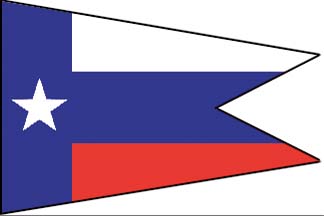
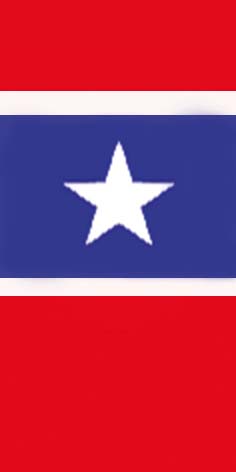 States Marine Corporation was founded in New York by Henry D. Mercer in 1930, and began by chartering foreign flag vessels in the tramp trades, and then developed liner services in post-war years using a large collection of war surplus standard ‘Liberty’, ‘Victory’, ‘C2’, ‘C3’ and ‘C4’ types. These were given the nicknames of American States e.g. Cotton State for Alabama, Old Dominion State for Virginia, Evergreen State for Washington etc. A full list of the 51 American States and their nicknames is given at the end of this article. The last of these ‘States’ steamers were sold at the end of 1973, but the subsidiary of Tankore Corporation continued with five ore/oil carriers, two of which were in service until the end of 1979.
States Marine Corporation was founded in New York by Henry D. Mercer in 1930, and began by chartering foreign flag vessels in the tramp trades, and then developed liner services in post-war years using a large collection of war surplus standard ‘Liberty’, ‘Victory’, ‘C2’, ‘C3’ and ‘C4’ types. These were given the nicknames of American States e.g. Cotton State for Alabama, Old Dominion State for Virginia, Evergreen State for Washington etc. A full list of the 51 American States and their nicknames is given at the end of this article. The last of these ‘States’ steamers were sold at the end of 1973, but the subsidiary of Tankore Corporation continued with five ore/oil carriers, two of which were in service until the end of 1979.
‘States’ Nomenclature
The Transatlantic passenger trade from the 1860s onward to around 1900 used some forty vessels with American ‘States’ nomenclature. State Line founded in 1873, Guion Line founded in 1866, National Line founded in 1864, and American Line founded in 1873 all confusingly used these names, with the confusion becoming so bad that State Line took the step of putting ‘State of’ as a prefix to the names of their steamers to differentiate them from the other three lines. Guion Line built their ‘States’ steamers at the Palmers yard in Jarrow and the John Elder yard on the Clyde, with Arizona 5,147/79 and Alaska 6,932/81 both capturing the Blue Riband of the Atlantic. They had accommodation for 140 in First Class, seventy in Intermediate Class, and one thousand in Steerage Class.
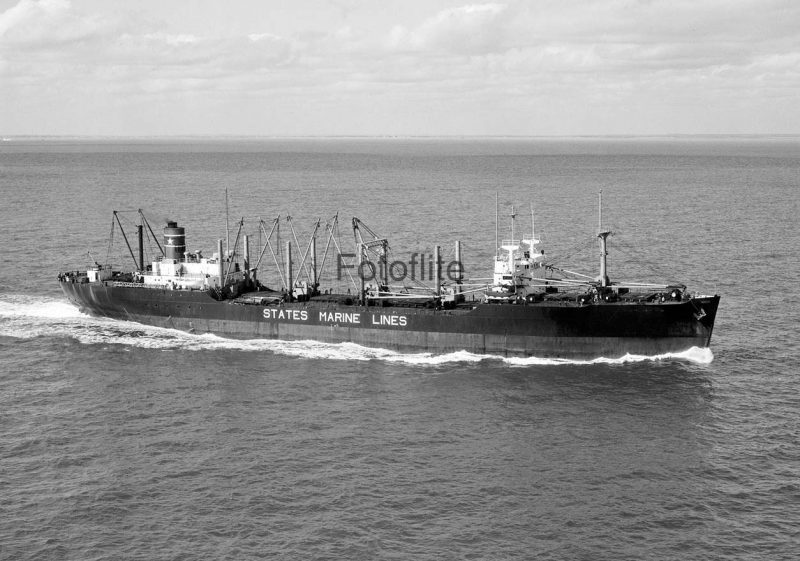
Conditions in Steerage Class had improved from the earlier long Transatlantic passages in wooden sailing ships. The appallingly crowded holds and lower decks previously had very little room and no privacy, with rough weather causing seasickness and passengers sick over each other, and no ventilation to take away the smell. Unhygienic conditions with cooking done on primitive stoves, and open air latrines on the weather deck above, caused dampness and disease e.g. cholera with the distinct possibility of passengers dying (and they frequently did) in transit. The ‘States’ vessel Washington of 1853 lost 94 passengers to cholera on one voyage, with a German migrant carrier losing one fifth of her passenger complement of 544 persons to the same disease.
The American States names of Alabama, Alaska, Arizona, California, Colorado, Dakota, Florida, Georgia, Idaho, Indiana, Louisiana, Michigan, Minnesota, Mississippi, Montana, Nebraska, Nevada, New York, New Jersey, Oregon, Pennsylvania, Virginia, Wisconsin, and Wyoming were used for these migrant steamers among others. Cunard Line and White Star Line then built Transatlantic liners for comfort rather than speed, and Blue Riband holders such as Arizona and Alaska mentioned above were laid up in 1894 and later sold for as little as £20,000 and £27,000 respectively. These rock bottom prices were well below their building costs, and State Line fared little better with their fleet of six ships and the goodwill of the company sold to Allan Line in 1891 for a mere £72,000. The vessels were State of Alabama (1873), State of Pennsylvania (1873), State of Indiana (1874), State of Georgia (1873), State of Nevada (1874) and State of Nebraska (1880) with a seventh vessel, State of California, building at the time of the sale.
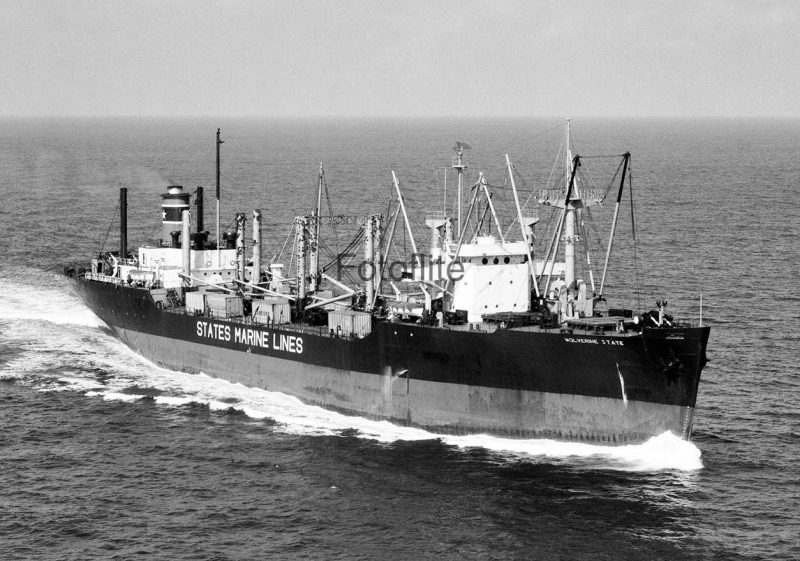
States Marine Lines
Henry D. Mercer was born on 26th March 1893 in Lodi in New Jersey and began his career as a railroad stenographer for the Erie Railroad. He served in the U.S. Navy during World War I and then became general agent for the New York territory of the Great Northern Railroad. He entered the shipping business by becoming Vice President of Dyson Shipping Company, and then founded States Marine Corporation in 1930 and appointed Cornelius S. Walsh as Company Secretary. Walsh later invested in the business, which had to begin by chartering foreign flag tramps on worldwide tramping trades. By the middle of 1934, the business was able to start its first liner service to South Africa on a monthly basis with chartered vessels. In 1937, the first managed vessel was the ‘Laker’ Carrollton of 1,732 grt built back in 1903 by the Buffalo Dry Dock Company. She had a unique method of loading cargo, with a rail track between the aft accommodation and running down the centre line with rail wagons ‘bottom unloaded’ into her single hold. She was owned by the Saginaw Dock and Terminal Company of Cleveland (Ohio) and continued to be managed by States Marine Lines for the next twenty years.
Four Hog Islanders of 5,100 grt with two steel decks were purchased during 1940/41 and renamed Lone Star, Wolverine, Green Mountain and Hoosier, having been completed in 1919 by the American International Shipbuilding Corporation of Hog Island (Pennsylvania) as Saugerties, Luxpalile, Saco and Tomalva respectively. A similar sized vessel was also acquired at that time and renamed Keystone, and had been built in 1919 as West Cherow by the Northwest Steel Company of Portland (Oregon). This quintet were the first to be given the nicknames of American States by the company. The smaller four hold engines ‘midships Atlantic Trader of 2,241 grt was also managed for the Saginaw Dock and Terminal Company and had been completed at Ashtabula in 1918 as Crathorne.
Two of the Hog Islanders were lost to enemy action during World War II, with Hoosier attacked by German bombers in the infamous Arctic convoy PQ17 on 9th July 1942 and sunk by torpedo from a British corvette in the early hours of the following morning, the crew being rescued by the corvette. She had loaded machinery and explosives at Philadelphia with a deck cargo of tanks. Keystone was torpedoed and sunk by U172 on 13th March 1943 after dropping out of convoy UGS-6 from New York to North Africa due to engine trouble in mid Atlantic. She was requisitioned by the British Admiralty and was carrying a general cargo with her decks full of aeroplanes, tanks, trucks and gasoline in drums, with two men lost from her big crew of 73, which included some gunners and armed guards. The surviving crew were landed on Fayal in the Azores and repatriated to New York.
In 1945, two engines ‘midships sisters of 3,280 grt were acquired from Grace Lines and renamed Chipana and Curaca, and had been completed in 1920 by the Mobile Shipbuilding Company of Mobile (Alabama) as Oklahoma City and Atlanta of Texas respectively. Three standard ‘Victory’ types in Mercer Victory, Morgantown Victory and Westerly Victory were being managed by States Marine Lines at the end of the war.
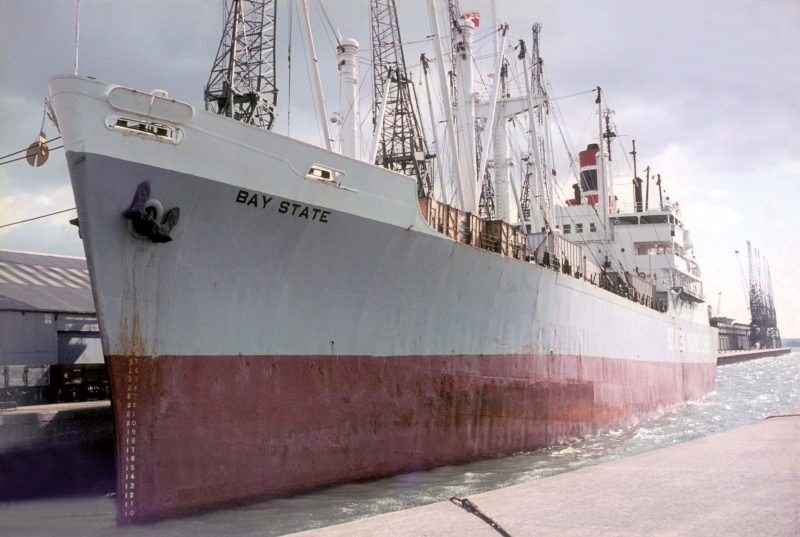
War Surplus Vessel Acquisition
States Marine Lines joined the Trans-Pacific Freight Conference, the Japan-U.S. Gulf and Atlantic Freight Conference and the Pacific Westbound Conference in early post-war years, as well as operating Transatlantic services from New York (Pier 51) to North European ports, with Southampton as the British port of call. Fifteen war standard types were in a weekly service on the Transatlantic route, including Hoosier State, Keystone State and Wolverine State of the ‘C4’ type from 1955. Ten vessels were operating westbound on the Pacific in 1949, with six owned vessels and four on charter from the Luckenbach Steamship Company Inc. The ports of call were Vancouver, Seattle, Portland (Oregon), San Francisco and Long Beach to Guam, Manila, Hong Kong, Shanghai, Taku Bar (China), Kobe, Yokohama and Pusan.
The war surplus vessels were purchased at low prices, and a large number of chartered vessels were able to be switched between the three main routes as demand dictated. In 1946, a large fleet of owned and managed vessels included Carrollton, Chipana, Curaca, Atlantic Trader, Green Mountain, Lone Star, Wolverine and the newly purchased Cotton State (C2 built as Messenger), Empire State (C2 built as Sparkling Wave), Garden State (C2 built as Ocean Rover), Golden State (C2 built as Mountain Wave), Hoosier State (Liberty type), Keystone State (Liberty type), Magnolia State (C2 built as National Eagle), Old Dominion State (Liberty type), Palmetto State (Liberty type) and Volunteer State (Liberty type). A further five ‘Liberty’ types were acquired in 1947 and renamed Blue Grass State, Evergreen State, Lone Star State, Peach Tree State and Wolverine State.
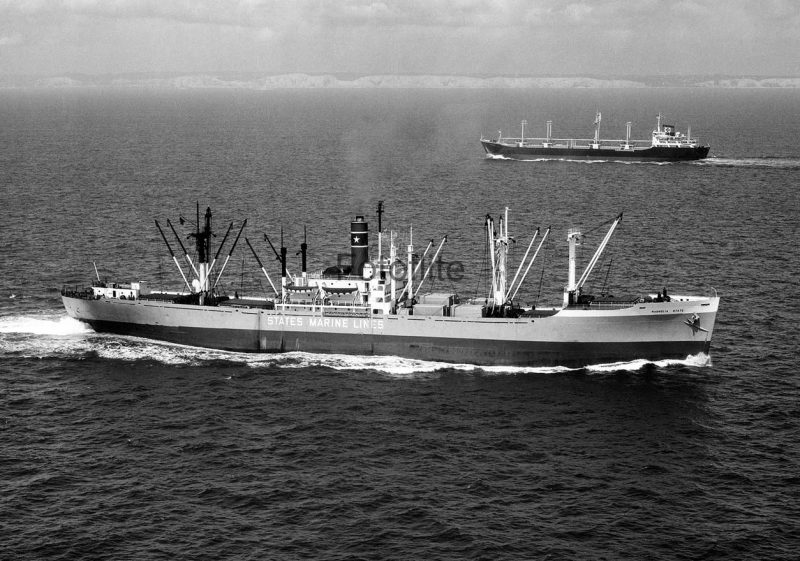
On 21st June 1946, Safmarine of South Africa was established as the national shipping carrier, with Henry D. Mercer purchasing a controlling interest, which was held until 1959. Safmarine was initially headed by Air Marshal Sir Arthur ‘Bomber’ Harris as Managing Director, and an old friend of Henry D. Mercer. States Marine Lines acted as loading agents in New York and other U.S. ports and provided some of the ships, and also assisted Safmarine in purchasing its first three ‘Victory’ types from the U.S. Government in April 1947.
Korean War
The Korean War lasted for three years from 25th June 1950 to 27th July 1953, and States Marine Lines carried large quantities of bombs, shells and torpedoes across the Pacific for U.S. Army and U.S. Navy forces. The bloody battles of Heartbreak Ridge, Old Baldy and Porkchop Hill against strong Chinese Communist troops ended in stalemate, and it was solved only by drawing a line across the Korean peninsula to create the Communist state of North Korea and the pro-Western State of South Korea. States Marine Lines vessels and time chartered American vessels from other fleets e.g. Luckenbach, Grace Lines etc. were often sub chartered to the Military Sea Transportation Service (MSTS) for military cargoes and vehicles loaded at Boston, Philadelphia, Gulfport, Mobile, Beaumont (Texas), Lake Charles, Galveston, Houston, San Diego, Los Angeles, San Francisco, Oakland Army Base and Bangor Naval Ammunition Depot (Washington) for ports in Korea and Japan. Foreign flag time chartered vessels then often took over the main commercial freight services from those sub chartered to MSTS.
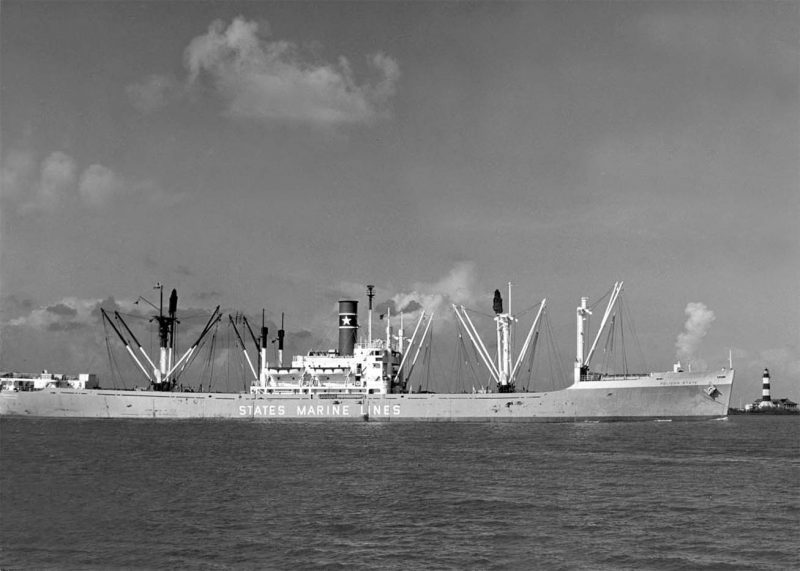
States Marine Lines had opened a second shipping corporation office in 1948 at Wilmington in Delaware, and vessels were transferred between the New York Broad Street and Wilmington West Tenth Street corporations for financial reasons until 1961. New York is known as Empire State and Delaware as First State, with the capital of Wilmington combining the charm of Baltimore with the industry and port of Philadelphia. The two offices controlled in 1950 a large fleet of owned war standard types including Beaver State, Blue Grass State, Buckeye State, Constitution State, Cotton State, Empire State, Evergreen State, Garden State, Green Mountain State, Golden State, Hoosier State, Keystone State, Lone Star State, Magnolia State, Old Dominion State, Peach Tree State and Pelican State. Ten ‘Victory’ types were also managed for the U.S. Government in Alamo Victory, Brigham Victory, Earlham Victory, Kenyon Victory, Loma Victory, Oberlin Victory, Ouachita Victory, Sharon Victory, Twin Falls Victory and Wesleyan Victory, with Occidental Victory, Beatrice Victory, Grove City Victory also managed from 1951/52.

In 1954, States Marine Lines took over the management of the Bloomfield Steamship Company of Houston, and eventually gained control of the company. It had been founded in 1946 by Benjamin M. Bloomfield, a former executive of Lykes Lines, but he had to sell its vessels to Farrell Lines after Lykes Lines blocked the Bloomfield application for subsidy to the U.S. Government. States Marine Lines also applied for subsidy to the U.S. Government in 1954, but this was never granted after twenty years of waiting, again blocked by the vested interests of the other subsidised lines operating on the three main freight routes. Three ‘C4’ types were acquired in 1955 and renamed Hoosier State, Keystone State and Wolverine State, and one ‘C3’ type was renamed as Lone Star State and had been completed as Sea Pike in 1943. The ‘C4’ types with their long decks were ideal for carrying the early forms of containers, which were used on the Transatlantic service into Southampton.

States Marine Isthmian Lines
Isthmian Lines, founded in 1910 as a wholly owned subsidiary of U. S. Steel, was acquired on 6th March 1956 for an estimated $30 million from U.S. Steel, with the company then known generally as States Marine Isthmian Lines from that date. The two dozen vessels of Isthmian Lines with yellow funnels and ‘Steel’ prefixes to their names combined with the States Marine Lines vessels to create an owned fleet of 51 ships with a time chartered fleet of over seventy vessels, including several of the ‘C2 Combo 52’ standard types built from 1946 onwards with accommodation for 52 persons. The grouping of the two lines formed the largest unsubsidised American shipping line, second only to United States Lines in size. The plans of Henry D. Mercer included four more important shipping routes and a large newbuilding programme of thirty cargo-liners, but were dependent upon the approval of the U.S. Government of his application for subsidy, which unfortunately was never approved. The red port wine funnels of States Marine Lines with a white star on a broad dark blue band between two white bands was worn by both the large owned and chartered fleet.
In October 1959, States Marine Lines began an overseas service using ‘Flexi-Vans’, an early form of container hoisted onboard using the normal cargo derricks. The first cargo in a ‘Flexi-Van’ contained radiator coils bound for Inchon in Korea, and in 1961 a regular monthly service was begun from New York to the Persian Gulf, India, Pakistan, Ceylon, South East Asian ports, Taiwan, Japan and Korean ports. This effectively became a ‘Round the World’ service as the return voyage loaded on the normal Pacific routes of the Trans-Pacific Freight Conference and the Japan-U.S. Gulf and Atlantic Freight Conference. Cargo ships were chartered from Egon Oldendorff of Lubeck e.g. Birthe Oldendorff in 1967, and the worldwide service lasted until the end of the 1960s.
In 1962, the owned States Marine Isthmian Lines fleet comprised twenty five standard ‘C2’, ‘C3’ and ‘C4’ types of States Marine Lines and twenty five standard ‘C3’ types, all with ‘Steel’ prefixes to their names, of Isthmian Lines. Several more ‘Victory’ types continued to be managed for the U.S. Government. Four of these owned vessels were transferred to the ownership of the subsidiary Global Bulk Transport Inc. fleet formed in 1959. Nine ‘C2’ and ‘C3’ types were purchased in 1960 from the Luckenbach Steamship Company of New York and Philadelphia and renamed Aloha State (built as Sea Snipe), Badger State (built as Starlight), Bay State (built as Tate), Bayou State (built as Waukesha), Blue Grass State (built as Tolland), Buckeye State (built as Sea Star), Copper State (built as Sea Devil), Evergreen State (built as Lamar), and Gopher State (built as Sea Perch).
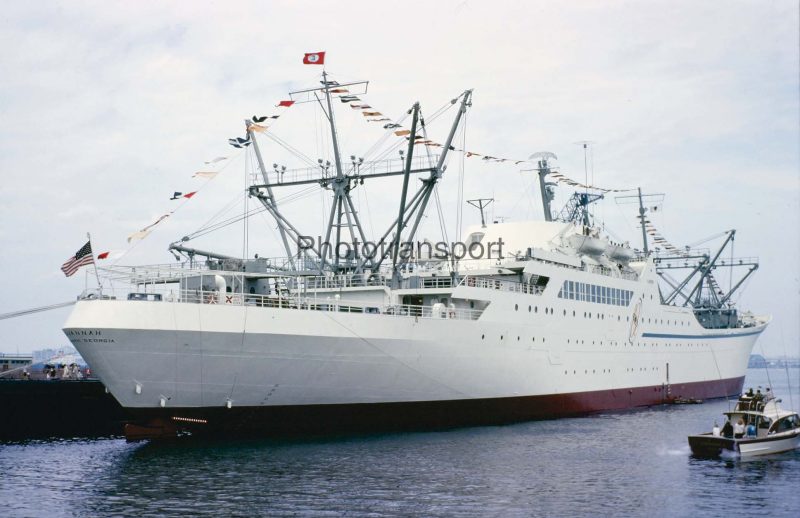
Nuclear Powered Ship Savannah Managed
The nuclear powered cargo-liner Savannah of 13,890 grt was launched on 21st July 1959 by the New York Shipbuilding Company in Camden (New Jersey) and named after the port in Georgia. She featured a very streamlined superstructure with accommodation for sixty passengers and three unorthodox masts, and was powered by a Babcock and Wilcox nuclear reactor providing the energy to generate steam for De Laval geared steam turbines to give her a maximum speed of 23 knots. She was managed by States Marine Lines from 1st May 1962 for the U.S. Department of Commerce. She made her maiden voyage from Yorktown (Virginia) to Savannah and then was used for worldwide experimental and demonstration voyages. This interesting ship had a short commercial life from August 1965 in the U.S. to Mediterranean and Far East trades after her management was transferred to American Export Lines of New York. States Marine Lines had become dissatisfied with the operational capability of the vessel during a period of labour difficulties at the company. She was later laid up at Savannah on 10th January 1972, and currently languishes in lay up at Pier 13 of Canton Marine Terminal in Baltimore.
It became abundantly clear by 1964 that the States Marine Lines application for subsidy would never be approved by the U.S. Government, having been consistently lobbied and blocked by the tactics of the subsidised lines. Accordingly, Cornelius Walsh, the company secretary, sold his shares in the company to Henry D. Mercer, using the proceeds to purchase the Waterman Steamship Company, one of the blocking subsidised lines. The war standard ‘Victory’ type Garden State (ex Buckeye State ex Oglethorpe Victory) rammed the Japanese cargo-liner Alaska Maru, owned by Osaka Shosen Kaisha, on her port side on 24th January 1964, the Japanese ship having anchored in thick fog off Egmont Key, about a dozen miles from the entrance to the busy port of Tampa.
Two interesting near sister engines aft cargo ships were purchased in 1968/69 of 15,500 dwt to 15,800 dwt in Norbeth, completed in February 1963 by the Bergens Mek Verksted yard for A/S Selskapet (Sig Sverdrup, Oslo), and Vikara completed in October 1963 for Skibs A/S Skagerak (Ditlev-Simonsen, Oslo) by the Gotaverken yard. They had the same length and beam, with Vikara two feet deeper, and were renamed Old Dominion State and Sunshine State respectively. They had six holds and six hatches and a good array of cargo derricks on five bipod masts, Gotaverken oil engines of 7,500 bhp giving the pair service speeds of 14.5 knots during their five years of States Marine Lines service before their sale to Oswego Latex Carrier Corporation as Oswego Planter and Oswego Tapper. Two freight barges of 2,500 dwt were completed in 1969 by the Levingston Shipbuilding Company of Orange (Texas) for work in the U.S. Gulf as Wisco Ranger and Wisco Trader.
Military Cargo For The War In Vietnam
The U.S. Government committed to a full scale war in 1965 in order to save the South Vietnamese regime in Saigon and bombed the north of the country. Some 37 million tonnes of war material was transported from American ports e.g. Boston, Philadelphia, Gulfport, Mobile, Beaumont (Texas), Lake Charles, Galveston, Houston, San Diego, Los Angeles, San Francisco, Oakland Army Base and Bangor Naval Ammunition Depot (Washington) for ports in Korea and Japan. Foreign flag chartered vessels then often took over the main commercial freight services from those sub chartered to MSTS. MSTS was renamed as Military Sealift Commission (MSC) in 1970. The Oakland Army Base in California was the primary despatch base as well as Bangor (Washington) for cargo bound for Da Nang, Saigon, Cam Rah Bay and Qui Nhon in Vietnam. States Marine Lines and other major American cargo lines carried the bulk of the cargo.
The cargo ship Badger State under the command of Capt. Charles T. Wilson was abandoned in the Pacific on 26th December 1969 after explosions from bombs being carried blew a hole twelve feet by eight feet in the side of number five hold. She had sailed from Bangor with a cargo of ammunition, bombs and torpedoes, but during a storm bombs rolled in the holds, striking each other and the inside of her hull. Finally, one of the bombs exploded and fire swept the ship, the crew abandoned ship into three life rafts, two of which capsized with the third sunk by another bomb falling directly on to it through the gaping hole in the hull. The difficulty in rescuing the surviving crew in mountainous seas meant only fourteen of the crew survived, with Badger State finally sinking on 5th January 1970 when 550 miles from Midway Island.
The list of war material was staggering and included six types of heavy battle tanks, armoured vehicles, landing craft, gun trucks, naval fast patrol craft, machine guns, grenades and grenade launchers, mines, bombs, torpedoes, flamethrowers, infantry support weapons, artillery, ammunition, aircraft, helicopters, and napalm and ‘agent orange’ chemical weapons. U.S. bombers dropped $17 million worth of explosives on the Viet Cong strongpoints, and aerially mined Haiphong and six other North Vietnamese ports, with the battleship New Jersey pounding inland targets. Despite awesome military power, the U.S. Department of Defence failed to defeat the Viet Cong, and also could not find enough political persuasion of the local population to end the war. The war finally ended on 30th April 1975 with the unconditional surrender of South Vietnamese and American forces to the Communist Viet Cong. The last fifty American troops were evacuated from Saigon by helicopter on that day. The war had cost the lives of over 46,000 U.S. troops in ten years of fighting with ten thousand more troops dying from disease and related causes.
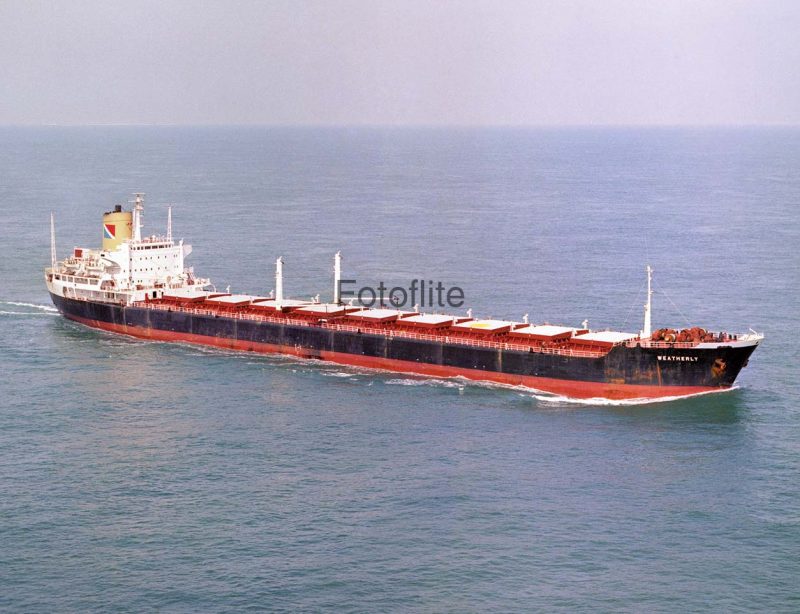
Decline Of The Fleet
Three further war standard ‘C3’ types were acquired during 1967/69 and renamed as Pine Tree State (completed as Sea Hound), Constitution State (completed as Knox), and North Star State (completed as Mormacmail for Moore-McCormick Lines by the Ingall Shipbuilding Corporation of Pascagoula in 1946). However, nine standard types were sold with five going to Reliance Carriers Inc. and flagged in Panama, and six other standard types were sent for scrapping at Kaohsiung during the same period.
On 1st December 1970, Henry D. Mercer retired as Chairman, and devoted his retirement to his love of ocean yacht racing. He had been the owner of large motor yachts since 1947, particularly his 110 feet long 193 grt motor yacht Bluejacket built in Amsterdam in 1958. The racing keel sloop Weatherly of length 96.4 feet was commissioned to a design by Philip Rhodes and built by Luders Marine at Stamford (Connecticut) as a challenger to defend the America’s Cup in 1958. She was owned by a syndicate of Henry D. Mercer, Cornelius S. Walsh and Arnold D. Freese, all members of the Rumson Yacht Club in New Jersey. Weatherly competed against the yachts Columbia, Easterner, Gleam and Vim, but it was Columbia that was chosen to successfully defend the Cup later in 1958. Weatherly was donated in 1965 to the United States Merchant Marine Academy at King’s Point, New York.
Henry D. Mercer had watched the yacht races from his beloved motor yacht Bluejacket after suffering a stroke just before the racing. His motor yachts were used for VIP entertainment and were moored in New York harbour, as he lived in New Jersey for most of his life with his wife Catherine. They had three children, two sons Douglas D. Mercer and Henry D. Mercer Jnr., and a daughter named Milicent. Douglas D. Mercer worked as a director of States Marine Lines for twenty five years, and was CEO for the last ten years of the company. The founder Henry D. Mercer died in New Jersey in 1978, and Milicent died in Redbank, New Jersey on 7th September 2013 at the age of ninety years.
The Mercer family and other major investors began to sell their investments in States Marine Lines in 1971. The fleet were still sailing to Vietnam and on regular Trans-Pacific and Transatlantic scheduled services throughout 1971 and 1972. The Isthmian Lines fleet also continued on their regular liner services and to Vietnam with war material. Seven further standard ‘C2’ and ‘C3’ types were sold during 1971/72, together with the three larger ‘C4’ types (Hoosier State, Wolverine State and Keystone State) scrapped at Kaohsiung. Two of a class of five cargo-liners of 11,850 grt ordered from the Mitsui and Mitsubishi yards in Japan were now not needed, and were sold during fitting out to Nedlloyd, who had ordered the remaining trio for their ‘K’ class. The quintet had five holds in front of the bridge and one aft, with derricks on three goalpost masts together with four pedestal cranes for working cargo.
The final four war standard types were scrapped at Kaohsiung between April and September 1973 in Copper State, Pine Tree State, Gopher State and Buckeye State. However, a subsidiary company still owned five ore/oil carriers as Tankore Corporation, set up in 1968 as a subsidiary of Global Bulk Transport Inc. Three ore/oil carriers completed at the Fairfield yard at Govan during the 1950s for management by Gorrissen and Klaveness of Oslo had been purchased and renamed Sanovia (built as Free State), Santurce (built as Enduro), and Santos (built as Cuyahoga). They served for three years from 1972 to 1975, with Sanovia and Santurce scrapped, and Santos sold for use as a pipelayer and crane ship and renamed Ocean Builder 1. Two sister ore/bulk/oil carriers of 46,935 dwt had been commissioned as newbuildings in Japan in 1967/68 as Weatherly and Buckeye, and were the last vessels of the States Marine Lines empire when they were sold off in March and August 1979. They were sold to the Chateaugay Corporation of Panama without change of name and continued to trade in American coastal waters until sold in 1983 to Trade Hellenic Inc., taking the names of Trade Quest and Trade Daring.

States Marine Lines had suffered from a complete lack of subsidy in competition with many other subsidised American lines, and could not make the transition into the container era. I wish to thank the excellent website of www.statesmarinelines.com for the information contained in this article.




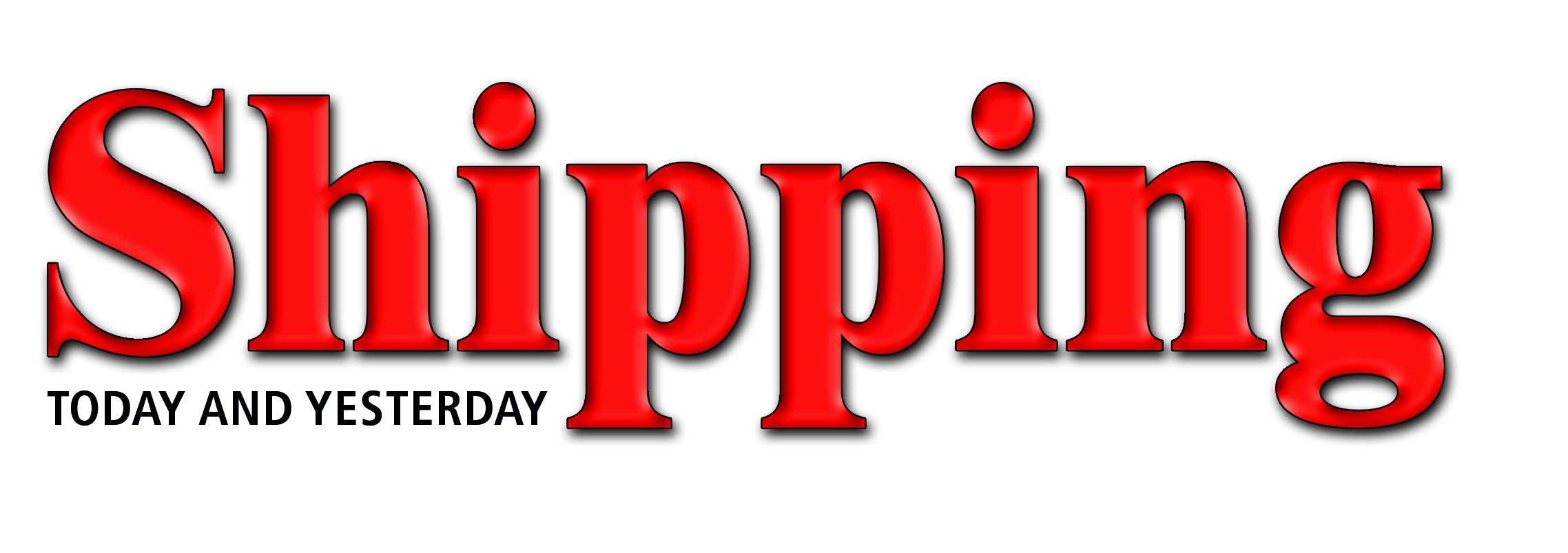
Comments
Sorry, comments are closed for this item